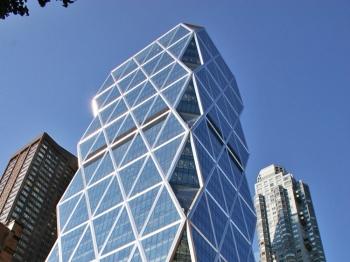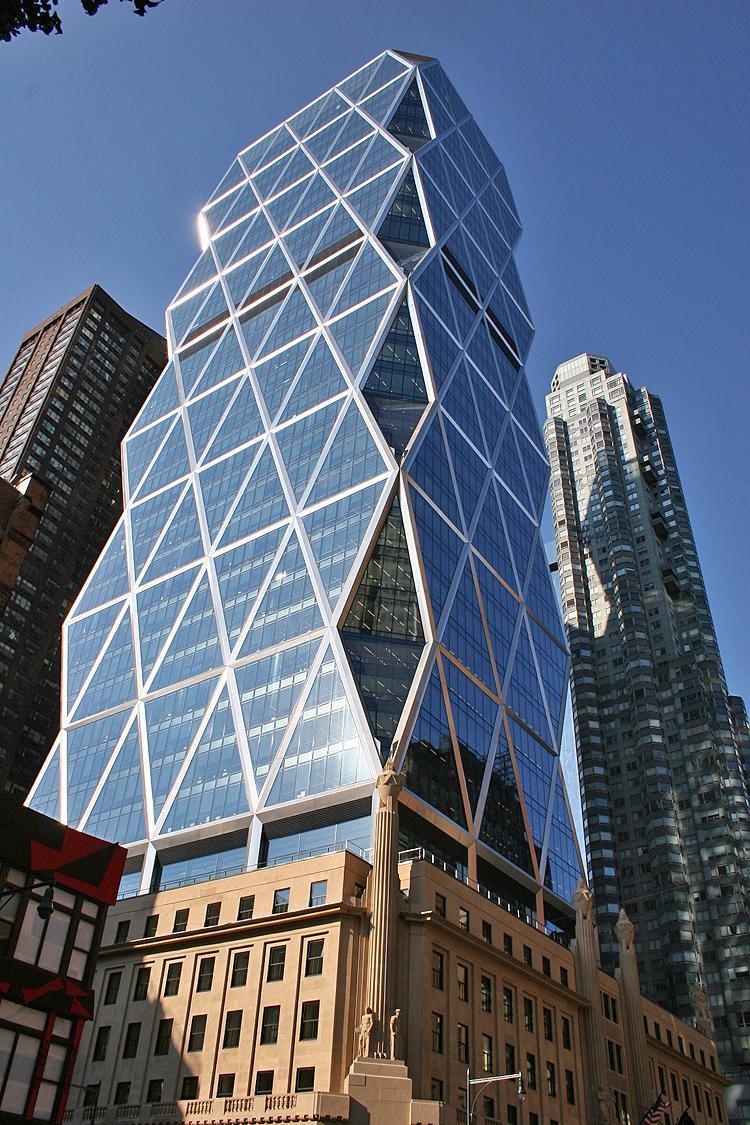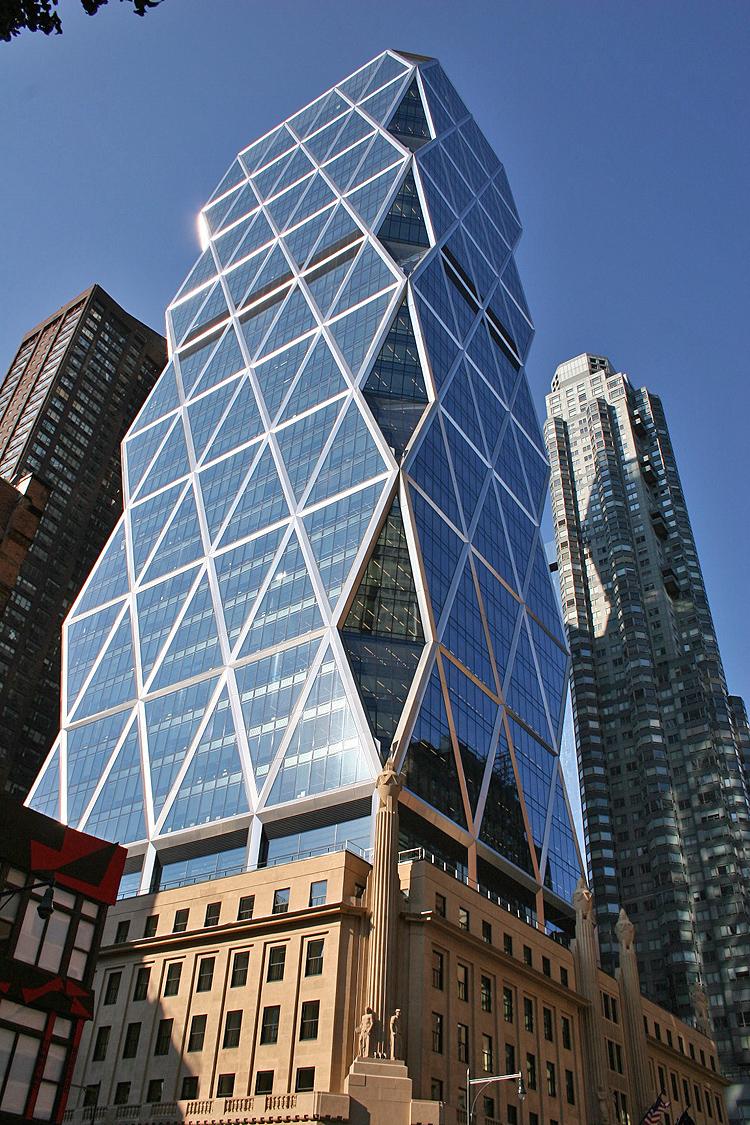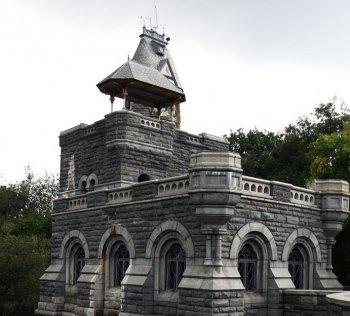New York City Structures: Hearst Tower
In honor of Earth Day we are looking at the Hearst Tower on Eighth Avenue at 57th Street.

MUTLIFACETED JEWEL: The Hearst Tower on Eighth Avenue is New york City's first occupied LEED Gold Certified building. Wikimedia Commons
|Updated:



